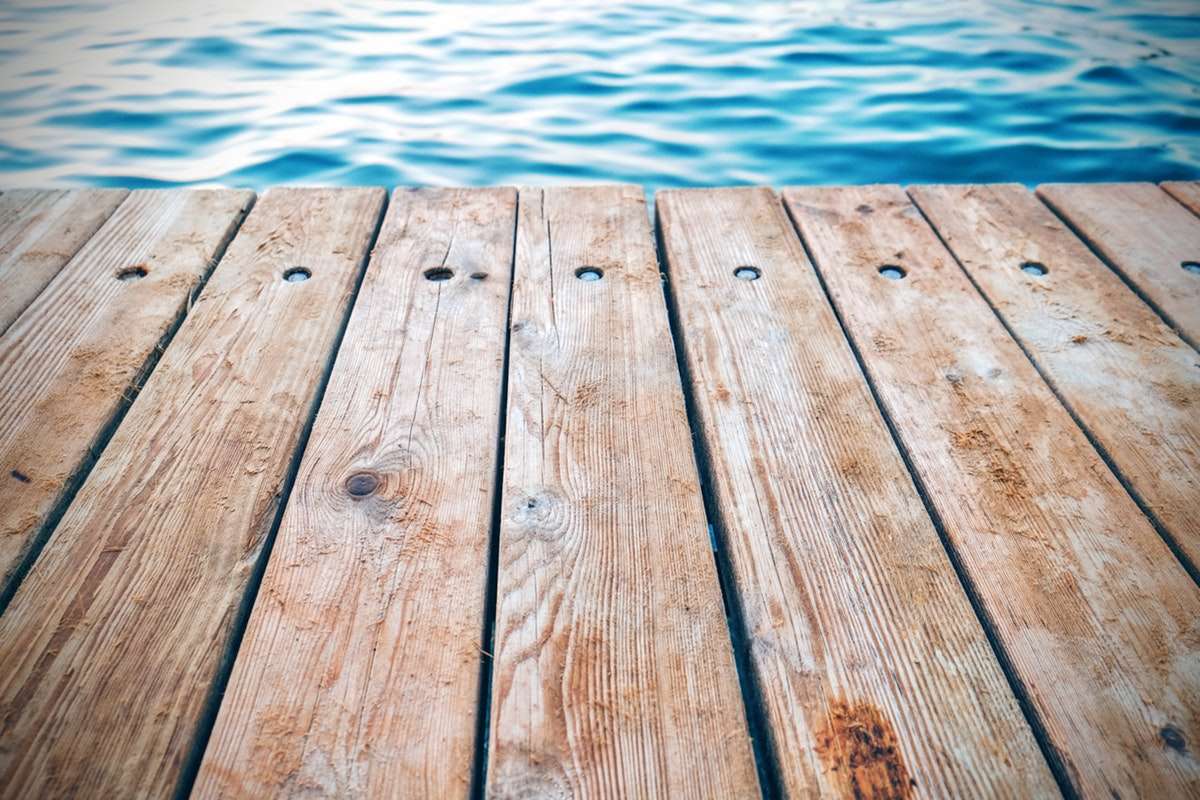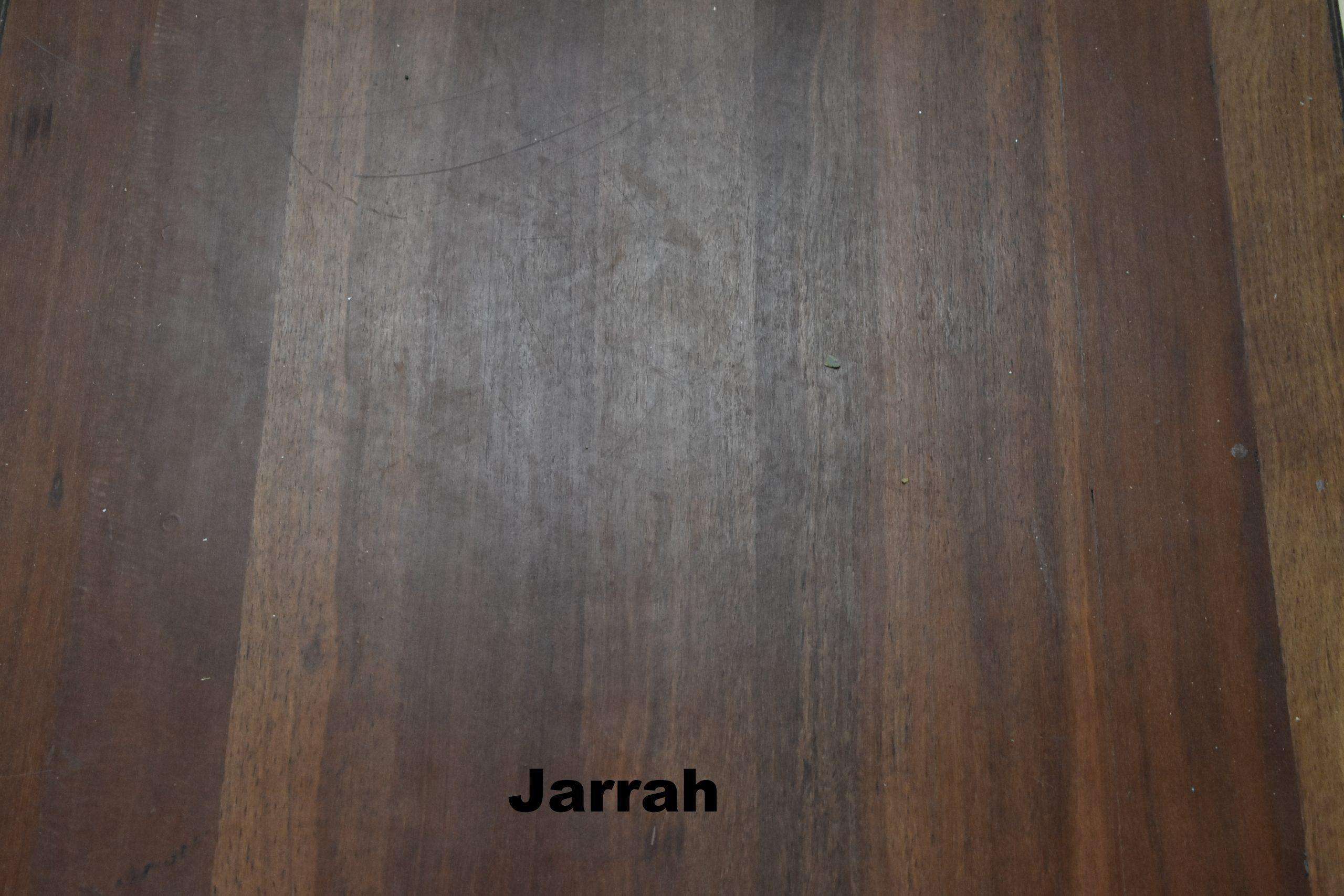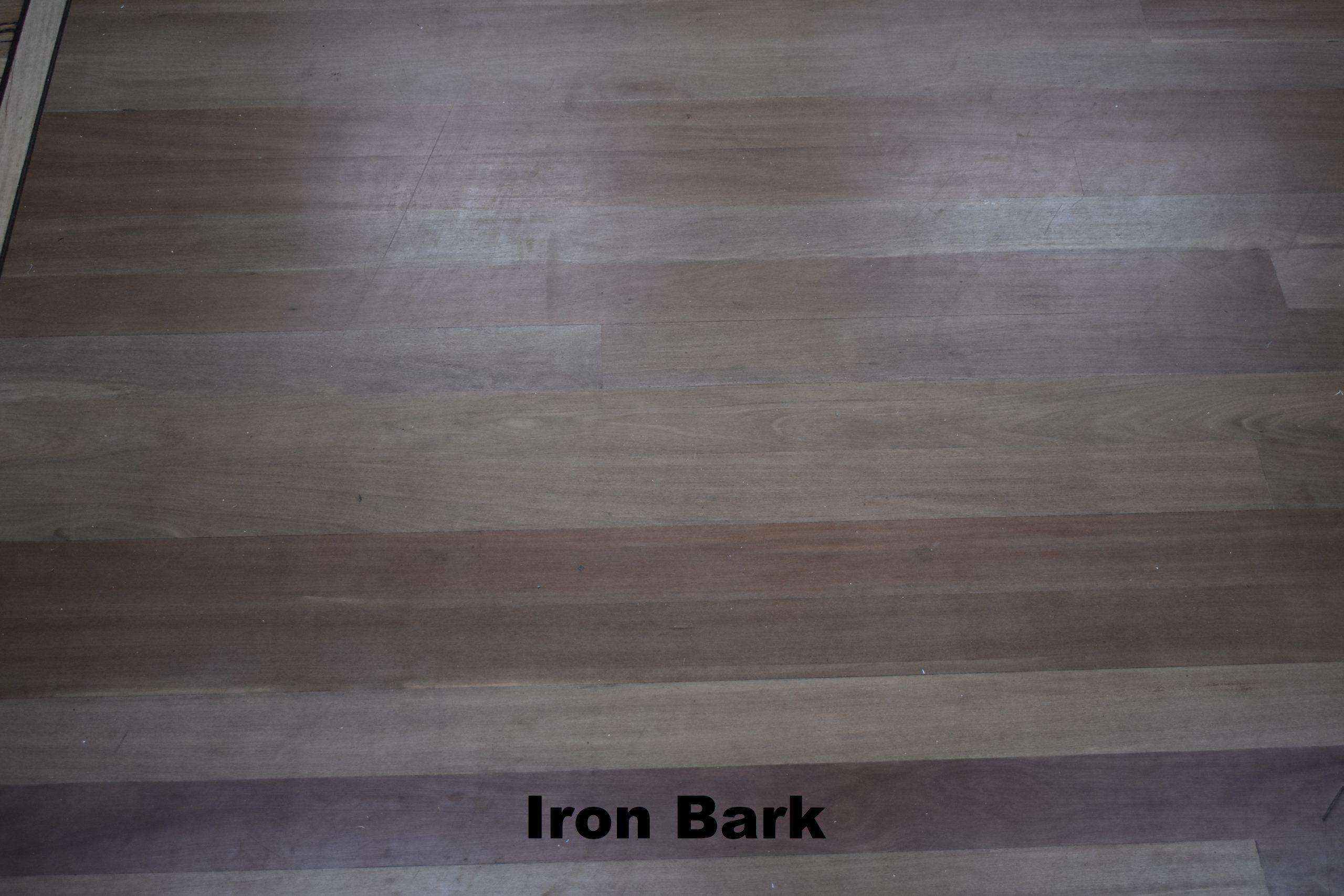Many homeowners, however, are reluctant to use timber for outdoor decking because it requires regular maintenance. Timber decking needs to be cleaned, repainted, re-stained and resealed annually to retain its colour, texture and durability. Otherwise, the poor upkeep would lead the wood to rot, splinter or become discoloured.
If you’re interested in adding a timber deck to your home but are worried about the responsibility of maintaining it, you can make the deck less susceptible to wear and tear and prolong its overall lifetime by choosing the right type of wood. Timbers have different levels of durability, so it’s important that you pay attention not just to the wood’s visual appeal, but also to its resistance properties.
Below are the best types of wood for decking:
1. Jarrah
Native to the southwest region of Western Australia, jarrah is the cream of the crop when it comes to timber decking choices. In terms of aesthetic value, this hardwood comes in a range of colours: rich red, warm dark brown, soft salmon pink and soft blonde. When left unsealed, jarrah turns into a lovely grey colour over time.
The wood also has wavy lines of interlocking grain that adds to its character. This texture is perfect for homes with a rustic or a Hamptons-style theme.
Jarrah is a popular choice for outdoor decking and furniture because of its high level of durability. It’s naturally resistant to rot, harsh weather and even termites, which helps with its longevity. Jarrah is also 15 per cent denser than oak, so its highly resistant to fire. This makes jarrah an ideal decking material choice if you’re from an area with a high Bushfire Attack Level (BAL).
The only drawback of opting for jarrah wood is its cost, which ranges between $185 to $320 per square metre, depending on the colour and texture. You can expect a jarrah deck to last at least 25 years, though, so you’re sure to get a high return on your investment.
2. Blackbutt
Blackbutt rivals jarrah in terms of fire resistance; it’s one of the seven hardwoods deemed suitable for home construction in BAL-rated sites by the Victorian Building Commission. It’s also very durable, although not quite on par with jarrah. With proper care, blackbutt can endure prolonged, harsh weathering.
Native to south-eastern Australia, blackbutt also comes in a spectrum of brown shades, from medium honey brown to creamy blonde. The light colouring is perfect if you want to give your outdoor space a light and airy vibe. The wood also easily accepts stains if you prefer a darker hue.
When it comes to texture, blackbutt has a straight grain that’s great for both exterior and interior applications.
A drawback of opting for a blackbutt deck is the cost. Its timber can be a bit expensive because the government limits blackbutt logging activities to protect hardwood forests. Additionally, blackbutt flooring surfaces tend to crack easily, so you’ll need to finish the deck with polish instead of paint to prevent this from happening.
3. Merbau
Merbau is popular for its rich red-brown tones. Many homeowners also claim that the wood’s appearance improves over time because of its natural oils. Additionally, this timber has an interlocking grain pattern that adds to its rustic charm.
This hardwood offers a lot in terms of durability, too. Merbau is highly resistant to termites and has a low expansion rate, which is why it’s a popular timber option for outdoor decks. It’s another one of the seven timbers considered suitable for construction in bushfire-prone areas in Australia, along with blackbutt.
Merbau is relatively easy to work with despite being known for its durability, so you can save money on installation and build the deck yourself. It’s also more affordable compared to jarrah and blackwood even if it offers almost the same durability properties.
Merbau’s oily texture, however, has tends to bleed tannins when it gets wet. The tannin can stain the soles of your shoes, which can then track colour onto your floors and other indoor surfaces. Fortunately, you can avoid tannin staining by sealing the wood pieces on all sides using a high-quality sealant before installation.
4. Spotted Gum
Spotted gum is one of the seven hardwood types that can be used in areas with a high BAL rating. In addition to its fire resistant property, spotted gum is also highly durable and can withstand harsh outdoor elements. It’s dense, has low levels of shrinkage and is less likely to bleed compared to other hardwoods, making spotted gum an ideal choice for decking material.
When it comes to colour and texture, spotted gum comes in a wider array of hues compared to blackbutt, which is the type ofwood it’s most similar with in terms of durability. This hardwood ranges from light brown to dark reddish brown. It has a wavy grain with a coarse, uneven texture that gives off that natural wood look.
Spotted gum also takes oil and paint easily, giving you more freedom to customise your deck’s colour and finish.
Spotted gum, however, is on the pricey side – it’s even pricier than blackbutt. Outdoor decks made from this wood can last up to 40 years, though, which helps you save more in the long run.
5. Ironbark
Ironbark is known for having the highest possible durability rating of 1. It’s highly resistant to fire, termite, and rot, so if you’re looking to build a deck that will last you a lifetime, then ironbark is your best bet. This type of wood is commonly used for poolside decks, in fact.
The timber is also beautiful, with a tight cathedral grain pattern and strong marbling. You can find ironbark timbers in soft brown, chocolate brown, dark purplish brown, deep red and grey shades.
Just like the other hardwoods though, ironbark also has its disadvantages. For one, its high density and strength makes it difficult to work with, so it’s best to hire a professional to do the installation for you. It’s also expensive because of how durable it is.
An ironbark deck can last from 25 to 40 years, depending on how well they’re maintained.
What is the Best Decking Timber to Use?
All these timber options have advantages that can work in your favour, depending on what your decking requirements are and where you live. The best way to determine the best hardwood choice for your outdoor deck is to consult with a builder or a timber supplier. They’ll provide recommendations based on your decking needs and whether or not you’ll be building the structure yourself.
Tile Importer is a one-stop shop for timber, tiles and other building materials. Since 1967, we’ve been providing home builders and DIY renovators with high-quality materials for bathrooms, kitchens, flooring and decking, helping them achieve the best results for their construction projects.
For enquiries about timber options for outdoor decks, call us at (03) 9562 7181 or fill out our online form.




Which if any of these decking timbers will be okay without any kind of coating@
Hi Geoff, thanks for your question. If you have no deck sealant (on any of the woods mentioned), the wood underneath can fade rapidly due to UV rays. The wood can turn a grey colour. Some people like the grey look. However, rain or excessive moisture is the enemy of decks everywhere. As rain penetrates small cracks in the wood, decks can start to rot. Mold and mildew issues are common results of leaving a deck without a dependable wood sealer. So most people will use a sealant so their wood deck will last a long time. In many cases, you will need to seal a wood deck once a year. The more foot traffic and sun exposure your deck gets, the more often you need to apply deck sealant. Regards TI